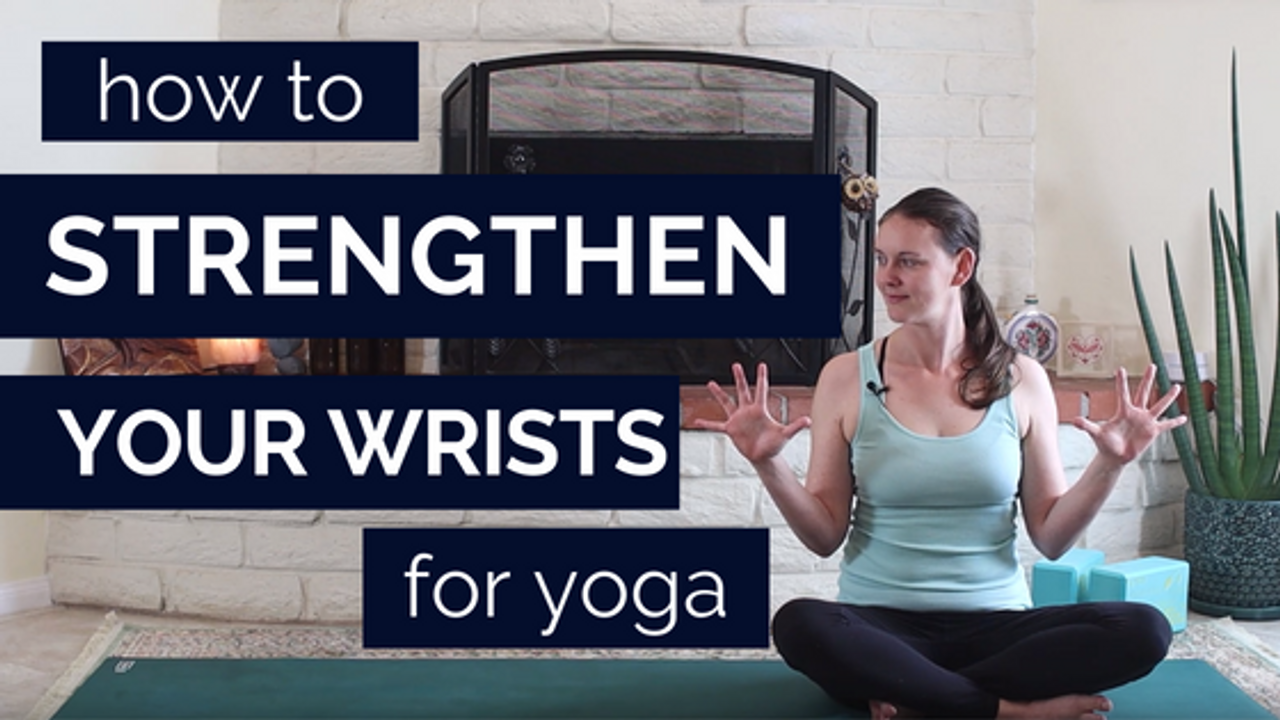How To Strengthen Your Wrists For Yoga: Learn To Bear Weight More Effectively.

When I teach a group yoga class, I mark out certain spots to scan the room and look for trends. The first time we bear weight on the hands--usually in a table top position--is one of those times.
I’m always curious to see how people bear weight on their wrists. Is it easy-peezy lemon-squeezie? Are people backing off and shaking out their wrists every few moments? Is there anyone cupping their hands on the floor, as if they’re trying to avoid placing weight on them?
And then throughout practice, does it seem like peoples’ wrists are fatiguing? Like we’re doing too much of something (and maybe not enough of something else)?
What I love about yoga is that it gives us ample time to be on our hands. I find something so joyous in that--in being able to turn our bodies into different shapes and have our hands help support our weight on the ground.
But I also get that for many people, placing weight on the wrists is not exactly the best-feeling thing to do.
The good news is, great-feeling wrists can be in your future. And this hypothetical future begins with learning a bit about them. So let’s get into how to strengthen our wrists for yoga, and learn how to bear weight more effectively on our hands.
Wrist Strength
In order for our wrists to feel great bearing weight, we need to develop their strength.
Just because we’re putting weight on our wrists does not mean we’re strengthening them. Stacking the shoulder over the wrist in table-top position can be easily achieved with gravity and the leverage of the floor pressing up into the hand. If we want to use this position to strengthen our wrists, we need to learn how to rely on our muscle strength rather than leverage and gravity. This is the difference between active and passive range of motion.
The goal is to use the strength of our muscles to generate our movements.
If you’re used to basically ‘hanging-out’ in weight-bearing positions, it may be challenging to feel those muscles activate. In that case, you can ‘turn on’ the muscles of your hands and forearms using different, more targeted movements, and then return to your weight-bearing positions with potentially more access to those muscles. Try this 16 minute wrist mobility class on my YouTube channel to try out some fun wrist movements.
Once you feel your hand and forearm muscles turn on in weight-bearing positions, you may find that they fatigue quickly. When that happens, you’ll notice that you automatically revert back to passively bearing weight in your hands via gravity and leverage. That’s okay! When this happens you have a few options:
-
Use your wrists passively as long as they are not in pain
-
If you start to feel pain, modify to your fists or forearms
A note about modifications: Modifying off your wrists and onto something else (like your fists or forearms) is great, but it’s not going to help you get better as bearing weight on your wrists. If you want to get better at that, you’ll need to bear weight on them. Use these modifications as your tap-out options for the instances where wrists just won’t do it.
You should notice that over time, your wrists are able to bear weight for longer periods of time with less pain and less feelings of effort.
Wrist Mobility
Using our muscles is great, and is the main difference between mobility and flexibility. We want mobile wrists, which means we want to use the strength of our muscles to position our wrists every way they are designed to move. Not only that, but once we get the hang of moving them through their full range of motion, we want to progressively load those positions by making movements more challenging.
Our wrists can make four basic movements: Flex, extend, invert and evert. (Again, go to my 16 minute wrist mobility class to practice these basic movements and learn how to load them.) Combined together, those movements create an almost circular motion. We want our wrists to be well-adapted to create these circular motions in a variety of movement circumstances. We want to learn how to challenge those motions so we continue getting stronger.
These simple but not easy practices will help you become more deliberate as a mover and will provide the mechanical input needed to transform how your wrists work and feel.
Next Steps
Your yoga practice is likely already giving you the opportunity to transform your wrists. Your secret sauce may be a few prep exercises you do before each practice, or a way of warming up your wrists through sun salutations that makes them work great, or simply knowing when to bear weight on the wrists and when to modify onto the fists or forearms.
Of course, finding teachers whose approach you jive with is of critical importance. Find people who can explain movement to you in a way that makes sense and generates results. If you haven’t found those people yet, keep looking for them. Your teachers are out there.
About Yoga In Your Living Room
Our yoga platform features smart, simple movements that help you feel better without confusing you, overwhelming you, or asking you to do impossible things. We believe you are capable of moving well, resolving pain, overcoming obstacles, and feeling capable beyond your wildest dreams. Try our online yoga membership risk-free for 7-days, or subscribe to our mailing list to stay in touch.


